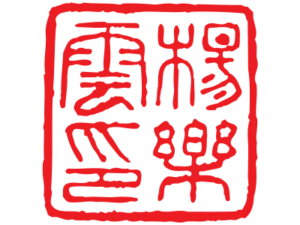Caroline Young, artwork and text

The Butterfly Lovers is one of the most loved and renowned ancient tales in China and dates from the Eastern Jin dynasty (266–420 CE).
In fact, the story was chosen by the Folklore Movement in the 1920s as one of China’s Four Great Folktales.
Her love for him was evident for all to see Zhu Yingtai was the ninth child and only daughter of a wealthy country squire. Not only was she beautiful, but also, from an early age, she showed great talent and aptitude for the classics, and possessed a strong determination to excel in her studies.
Her father wanted to arrange a suitable marriage for her, but she insisted:
“I want to travel and study at the academy, to broaden my mind. When I marry, it will be a man of my choosing.”
Eventually her father allowed her to attend school. Such behavior was not fitting for a girl at that time, so she disguised herself as a young man and set off on her journey.
During her travels to school, Zhu met up with a handsome young scholar, Liang Shanbo, who came from a poor family. Together, they journeyed to the Academy, where they studied together, living under the same roof. They became the closest of friends, almost like brothers. They even took an oath of fraternity, using dirt as incense, and making a commitment to each other under an old wooden bridge. Not once did Liang suspect Zhu was a girl. After graduation, she told him,
“You must come to visit me at my home. I have a younger sister and she is very beautiful. I will ask my father to betroth her to you.”
She was of course speaking of herself.
As Liang Shanbo came from a poor family, he felt unworthy of this proposal and never made the effort to meet Yingtai’s “sister”. Not until he had passed the imperial exams and was appointed magistrate of Yin County did he feel worthy enough to visit the Zhu family.
By then, Zhu’s father had promised her to the son of the Ma family. When the two students saw each other again, Zhu finally revealed her true self to him. Her love for him was evident for all to see. He felt the same and was overcome with grief when she told of him of her impending marriage. Filled with remorse for having never seen what was actually going on, he went away and not long afterward, died of a broken heart. He was interred at the foot of the Qingdao Mountain.
On her wedding day, Zhu’s wedding procession passed by the Qingdau Mountain on the way to the Ma residence. A sudden, fierce wind blew up and forced the revelers to stop in their tracks. As Zhu stepped from her bridal sedan chair, she saw Liang Shanbo’s grave. Weeping bitterly, she fell on the grave. At once, the grave burst open and she unhesitatingly leapt in, the grave closing quickly behind her. When the wind calmed down, all that could be seen were two exquisite butterflies dancing gracefully above the grave, until they flew off together into the distance.
This famous folktale was memorialized in 347CE, in Shaojiadu Village, Gaoqiao, (close to Ningbo City) when the Liang Shanbo Temple was constructed. It contains a statue of the couple as well as their burial tomb. People still pray at the temple for the eternal love of young couples.
Similarly, the Liang Zhu Cultural Park in Ningbo has landscape vignettes tracing the couple’s path in life and includes gardens representing: “Becoming Sworn Brothers at the Bridge”, “Being Classmates for Three Years”, “18 Mile Send-off”, “Farewell at the Tower”, and “Reunion of the Butterfly Lovers”.






